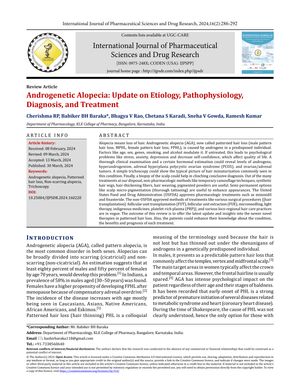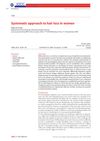Androgenetic Alopecia: Update on Etiology, Pathophysiology, Diagnosis, and Treatment
March 2024
in “
International journal of pharmaceutical sciences and drug research
”

TLDR Androgenetic alopecia is influenced by various factors and can be treated with medications, procedures, and non-drug methods.
Androgenetic alopecia (AGA), also known as patterned hair loss, is influenced by androgens and factors such as age, sex, genetics, smoking, and alcohol. If untreated, it can lead to psychological issues like stress, anxiety, and depression. Diagnosis involves clinical examination, hormonal tests, trichoscopy, and scalp biopsy. Treatments include non-pharmacologic methods (e.g., wigs, hair-thickening fibers), semi-permanent options (e.g., scalp micro-pigmentation), and USFDA-approved drugs (Minoxidil and Finasteride). Non-USFDA approved treatments include surgical procedures (e.g., hair transplantation), microneedling, light therapy, indigenous medicines, and Platelet-Rich Plasma (PRP). The review aims to provide updated insights into novel therapies and enhance patient knowledge about AGA and its treatments.





